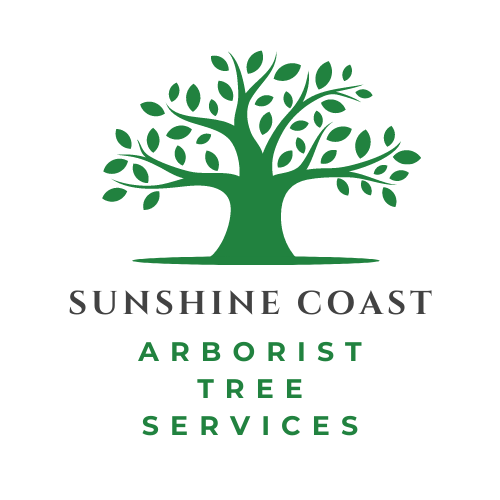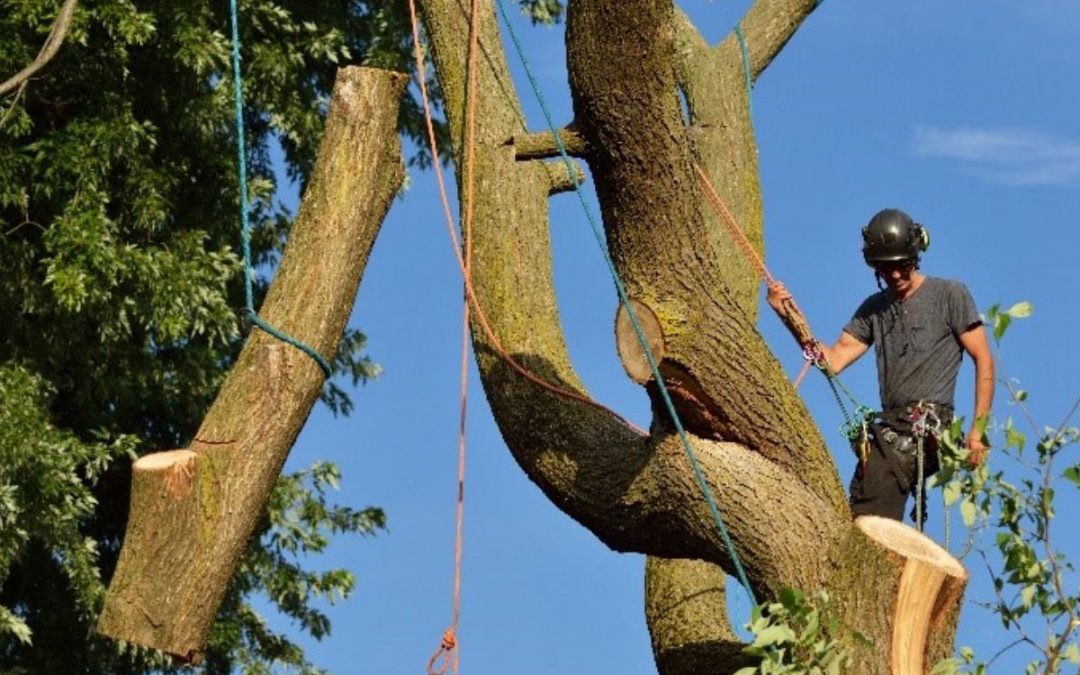Tree Removal in Narrow, Tight, or Difficult-to-Reach Areas
Difficulty in removing a tree? Not a problem! Not for the experts, at any rate.
There are numerous reasons why you should consider attempting to remove a tree in a confined or difficult-to-reach area on your own. It may be tempting to attempt to cut down a tree near a house on your own in order to save a few dollars, but the risks simply aren’t worth the small cost savings.
We’ll tell you everything you need to know about how to get rid of troublesome trees in this post, including:
When is it necessary to remove a tree between buildings, why should you always hire a professional arborist to remove difficult or dangerous trees, what techniques professionals use for tree removal in confined spaces, and how much tree removal services may cost
Here’s what you should know.
Can Trees Grown in Tight Spaces Be Removed?
Do you have a tree growing between two structures, such as your house and garage?
Perhaps you adore the tree that has sprouted on your front lawn, but it is dangerously close to the road or sidewalk.
Whatever the specific situation, the reality is that tree removal in tight spaces is sometimes necessary. And, if you’re wondering if that kind of tree removal is possible, the answer is “yes – but…” It is possible to safely remove a tree from between buildings or in difficult-to-reach areas with the right equipment, training, and experience. However, it is not a simple or do-it-yourself project!
When Should You Remove a Tree Growing in a Narrow or Small Space?
If any of the following apply, it may be time to remove a tree from a narrow area or tight spot:
Siding, gutters, wires, window AC units, satellite dishes, roofs, and other nearby structures are being struck by branches.
The tree’s wood is weak and frequently breaks (50% or more of the tree is damaged).
There are numerous large, dead branches (75% or more of the tree is made up of dead branches).
It scatters a large amount of debris on the lawn or in the road.
Shallow roots are constantly damaging the pavement or your lawn.
It is infested with insects, fungi, or diseases (especially if treatment is ineffective).
The tree is sagging.
The tree is noxious.
The roots have been harmed.
The tree has visible trunk decay or is hollow.
The tree is growing too tall and is located beneath power lines.
The tree is either too large to get around or is obstructing access.
It is located on a construction site.
Furthermore, homeowners may wish to remove trees in order to provide others growing nearby with a better opportunity to grow, to improve the line of sight, or simply because the tree does not have enough space to support its growth.
What to Think About When Removing Trees in Limited Spaces
If the problem tree is small enough, you should think about pruning it. Sometimes, even if the tree is growing in a confined space, this is enough to make it manageable. If the tree must be removed, there are a few factors to consider before deciding how to do so.
Tree removal may be a do-it-yourself project if…
If it’s a sapling or a small ornamental tree, you should be able to cut it down and remove it yourself (or with the help of a friend). Just make sure you wear safety equipment and have a way to dispose of all the debris (there will be a lot more than you think!).
However, removing a problematic tree on your own is rarely a good idea.
Why You Shouldn’t Try Tree Removal in Limited Spaces
Accidents happen, and if you’re not fully insured, you could be held liable for property damage and injuries to anyone helping you or passing by.
Furthermore, tree removal is a time-consuming and hazardous task. You could easily injure yourself if you don’t know what you’re doing, whether it’s how to maneuver around the crown of a tree or how to use power tools properly.
You might not be able to get to the tree at all. Trees that are growing near power lines or are sandwiched in other difficult-to-reach locations cannot always be safely climbed. Professional arborists may need to use equipment such as bucket trucks and cranes to remove the tree.
Not to mention the cleanup that will be required once the tree has been removed! Disposing of tree pieces is difficult, from stumps to branches and other waste.
Discover more about do-it-yourself tree removal.
One of the most effective ways to make tree removal safer and more efficient is to simply delegate the task to the professionals. A tree service professional will have the tools and training required to remove a difficult-to-remove tree, regardless of its location.
How Do You Get a Tree Out of a Tight Spot?
So, what’s the best way to get a tree out of a tight spot? Professional arborists will remove a tree in a variety of ways, including between buildings, near a house, in a small backyard, or in other tight spots. The best option is determined by the circumstances.
Climbing vs. Felling & Cutting
For trees that need to be removed from confined spaces but aren’t too large, an arborist may only need to use a chainsaw to fell the tree. This is a risky option; it should only be used if the tree can be safely guided between the surrounding structures as it falls. YouTube is rife with videos of “epic fails” when homeowners attempt to do this work themselves.
Often, the tree cannot be felled without first removing some (or all) of the branches, which would likely hit anything nearby as the tree fell. With a smaller tree, a pole chainsaw may be sufficient to cut the necessary branches without climbing the tree.
In tight spaces or urban areas where the tree would hit buildings, fences, porches, or powerlines on the way down, felling larger trees is not an option. Instead, the tree will most likely have to be cut down in sections, beginning at the top. A tree care specialist will climb the tree and then cut down the trunk in sections, either letting the pieces fall to the ground or lowering them to the ground with a rope.
Using a Bucket Truck to Remove a Tree
A bucket truck can also be useful when removing trees or limbs from tight or difficult-to-reach places.
The boom and bucket may allow the arborist to reach the tree canopy even if it is difficult to reach from the ground or if other buildings or trees are in the way. Depending on the size and weight of the tree and truck, it may also be possible to use the truck’s boom arm to lift parts of the tree out of the space.
Nonetheless, you’ll usually be left with a large pile of heavy debris that must be carried out of the area for disposal.
Tree Removal With Cranes
Crane-assisted tree removal can make the process faster, safer, and less damaging to the surrounding landscape. When the tree is close to a house, a road, or people, safety is especially important. The tree can be lifted vertically, piece by piece, and moved to a drop zone using a crane. It will then be cut into smaller pieces and run through a chipper before being used as mulch.
The use of a crane to remove a tree from a tight space greatly reduces the likelihood of the tree falling on a building, structure, or surrounding trees.
Cranes can also lift trees over buildings and obstacles, allowing tree removal companies to remove trees that would otherwise be impossible to remove.
However, crane-assisted removal still requires the placement of a climber in the tree. If the tree is dangerous or damaged in such a way that climbing it is dangerous, using a crane alone may not be possible.
>> Find out more about using a crane to remove difficult trees.
Crane Removal Using a Remote-Controlled Grapple Saw
Using a remote-controlled crane with an attached grapple saw is the safest way to remove a tree from between buildings or other narrow or confined areas. The grapple can grab and move tree parts, and the saw integrated into the grapple can quickly cut through branches and tree trunks.
This cutting-edge piece of equipment enables tree service companies to remove hazardous and difficult-to-reach trees without the use of multiple pieces of equipment or endangering climbers. It’s ideal for working on trees in urban areas, especially when buildings are close together.
Furthermore, it can reach areas that other tree removal equipment cannot. Some difficult tree removal jobs would be impossible to complete without this type of saw. It’s an expensive piece of equipment that you’re unlikely to have lying around the garage, which is yet another reason why difficult tree removal is not a do-it-yourself project!

